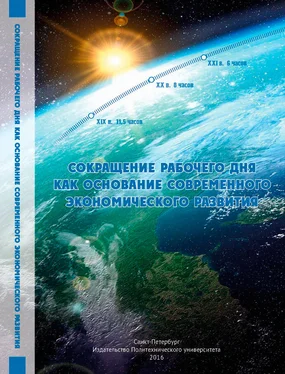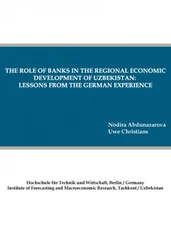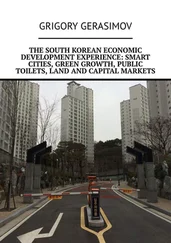78. Marchand O. An international comparison of working times // Futures. June 1993, pp. 502 – 510.
79. Marsh, P. The New Industrial Revolution: Consumers, Globalization and the End of Mass Production. Yale University Press. New Haven and London. 2012. –311 p.
80. Mattesini F., Quintieri B., Does a reduction in the length of the working week reduce unemployment? Some evidence from the Italian economy during the Great Depression. // Explorations in Economic History № 43 (2006), pp. 413–437.
81. McGrattan E. R. Changes in the Distribution of Family Hours Worked Since 1950 - Federal Reserve Bank of Minneapolis and University of Minnesota 1998– 32 p.
82. Miles L. The Capabilities Approach and Worker Wellbeing // The Journal of Development Studies, 2014 Vol. 50, No. 8, pp.1043–1054.
83. Mohun, S. Unproductive Labour in the U.S. Economy 1964-2010// Review of Radical Political Economics. 2014, Vol. 46 Issue 3, pp. 355-379.
84. Nixson, F. Development Economics. Second Edition. Heinemann. 2001 .–124 p.
85. Pouwels B, Siegers J, Vlasblom J. D. Income, working hours, and happiness // Economics Letters №99 (2008), pp. 72–74.
86. Prescott E.C. Why Do Americans Work So Much More Than Europeans? // Federal reserve bank of Minneapolis Quarterly Review vol. 28, № 1,(2004), pp. 2–13.
87. Prescott E.C., Rogerson R., Wallenius J. Lifetime aggregate labour supply with endogenous workweek length // Review of Economic Dynamics №12 (2009), pp. 23–36.
88. Pullinger M. Working time reduction policy in a sustainable economy: Criteria and options for its design // Ecological Economics №103 (2014), pp. 11–19.
89. Radl J. Too old to work, or too young to retire? The pervasiveness of age norms in Western Europe // Work, employment and society №26(5), pp. 755–771.
90. Raposo. P. S., Ours J. C. van How Working Time Reduction Affects Employment and Earnings// Discussion Paper No. 3723, 2008, pp. 2-18.
91. Rijs K. J., Cozijnsen R., Deeg D. J. H. The effect of retirement and age at retirement on self-perceived health after three years of followup in Dutch 55–64-year-olds // Ageing & Society 32, 2012, pp. 281–306.
92. Roberts K., Rupert P. The Myth of the Overworked American // Quarterly Journal of Economics. January 15, 1995, pp. 969 – 1006.
93. Root L. S., Wooten L. P. Time out for family: shift work, fathers, and sports // Human Resource Management, Fall 2008, Vol. 47, No. 3, pp. 481–499.
94. Sallaz, J.J. Labour, Economy, and Society. Polity Press.2013. – 199 p.
95. Sauian M.S., Kamarudin N, Rani R.M. Labour Productivity of Services Sector in Malaysia: Analysis Using Input-Output Approach // Procedia Economics and Finance № 7 (2013), pp. 35 – 41.
96. Savage M., Cunningham N., Devine Fiona and other. Social Class in the 21st Century. A Pelican Introduction. 2015. – 449 p.
97. Skans O.N. The impact of working-time reductions on actual hours and wages: evidence from Swedish register-data // Labour Economics №11 (2004), pp. 647– 665.
98. Skidelsky R., Skidelsky E. How Much is Enough? Money and Good Life. Penguin Books. 2013. – 243 p.
99. Smith L.P., Shu Wen Ng, Popkin В. M. No time for the gym? Housework and other non-labour market time use patterns are associated with meeting physical activity recommendations among adults in full-time, sedentary jobs // Social Science & Medicine №120 (2014), pp. 126 – 134.
100. Smits J., Monden C. Length of life inequality around the globe // Social Science & Medicine №68 (2009), pp.1114–1123.
101. Snir R., Harpaz I. Beyond workaholism: Towards a general model of heavy work investment // Human Resource Management Review №22 (2012), pp. 232–243.
102. Spark K., Cooper C., Fried Y., Shirom A. The effects of hours of work on health: A meta-analytic review // Journal of Occupational and Organizational psychology (1997), №70, pp.391– 408.
103. Tragakes Е. Economics for the IB Diploma. Second edition. Cambridge University Press. 2012. – 566 p.
104. Wacker J.G., Yang C.-L., Sheu C. Productivity of production labour, non-production labour, and capital: An international study // Int. J. Production Economics №103 (2006), pp. 863–872.
105. Wise D. A. Facilitating longer working lives: international evidence on why and how // Demography, Volume 47–Supplement, 2010, pp.131–149.
106. Wunder C., Heineck G. Working time preferences, hours mismatch and well-being of couples: Are there spillovers? // Labour Economics №24 (2013), pp. 244–252.
107. Zolotov, A.V. Dynamics of labour input and average annual hours actually worked per worker in industry of developed countries and Russia: similarities and differences/ A.V. Zolotov, O.A. Mazur, M.V. Popov //Asian Social Science. – 2015. – Т. 11. – №14, pp. 205-210.
Chung H.-J. Economics: the User’s Guide. Published by the Penguin Group. 2014. P. 243.
Giugale M.M. Economic Development: What Everyone Needs to Know. Oxford University Press. 2014. P. 1.
Tragakes E. Economics for the IB Diploma. Second edition. Cambridge University Press. 2012. P. 437.
Nixson, F. Development Economics. Socond Edition. Heinemann. 2001. P. 12.
Nixson, F. Development Economics. Socond Edition. Heinemann. 2001. P. 12-13.
Tragakes E. Economics for the IB Diploma. Second edition. Cambridge University Press. 2012. P. 439.
Маркс К., Энгельс Ф. Собр. соч. 20. С. 294. (Marx, K., Engels, F. Works. Vol. 20. P.294).
Золотов А.В., Попов М.В., Философия производительного труда: Монография. Н. Новгород: Изд-во ННГУ. 2006. С. 13. (Zolotov A.V., Popov M.V., Philosophy of Productive Labour: Monograph. N. Novgorod: SUNN Publishing House. 2006. P. 13).
Chung H.-J. Economics: the User’s Guide. Published by the Penguin Group. 2014. P. 350.
Sallaz, J.J. Labour, Economy, and Society. Polity Press. 2013. P. 58.
Skidelsky R., Skidelsky E. How Much is Enough? Money and Good Life. Penguin Books. 2013. P. 165.
Sallaz, J.J. Labour, Economy, and Society. Polity Press. 2013. P. 42.
Ельмеев В.Я. Социальная экономия труда: общие основы политической экономии. – СПб.: Изд-во С.-Петерб. ун-та, 2007. С. 236. (Yelmeev V.Y. Social Saving of Labour: General Fundamentals of Political Economy. – SPb.: The St. Petersburg University Publishing House, 2007. P. 236).
Золотов А.В. Норма свободного времени как показатель социально-экономического развития//Социологические исследования. 1999. № 12. С. 72. (Zolotov A.V. The Rate of Free Time as the Index of Social Economic Development//Sociological Researches. 1999. № 12. P. 72).
Sallaz, J.J.. Labour, Economy, and Society. Polity Press. 2013. P. 54.
Sallaz, J.J.. Labour, Economy, and Society. Polity Press. 2013. P. 47.
Sallaz, J.J.. Labour, Economy, and Society. Polity Press. 2013. P. 59.
Маркс К., Энгельс Ф. Собр. соч. 20. С. 293. (K. Marx, F. Engels. Collected Works. Vol. 20. P. 293).
Читать дальше












